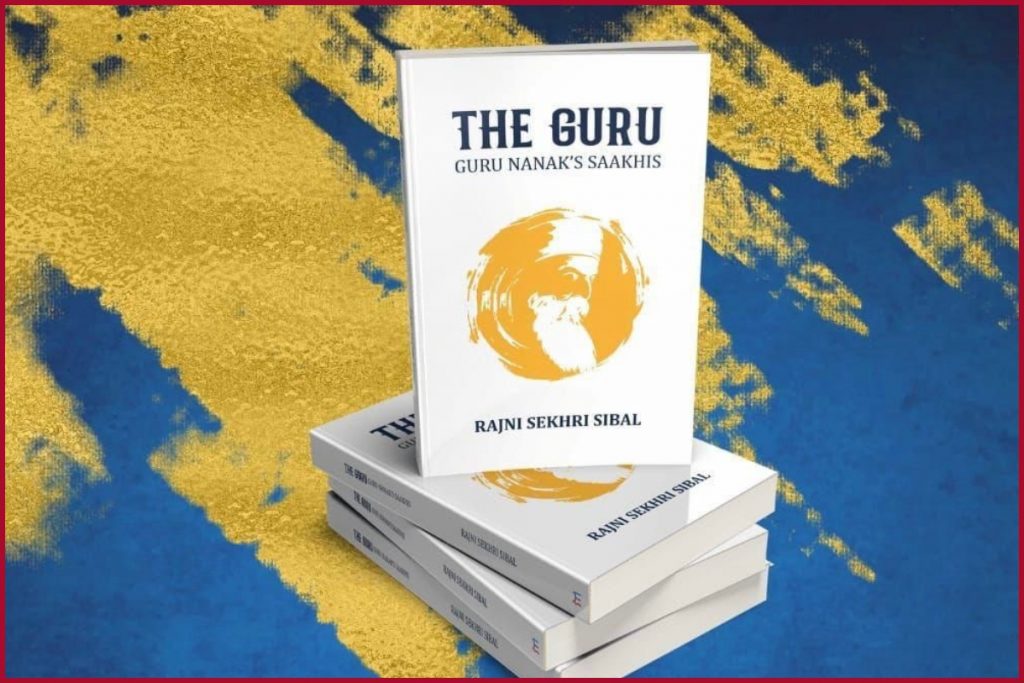New Delhi: Most children grow up listening to the tales lovingly narrated by their parents and grandparents; Rajni Sekhri of Batala in district Gurdaspur of Punjab, where Guru Nanak was married five centuries back, was no different, she too loved to hear mythical tales of supernatural heroes. However, at eight when she was barely beginning to make sense of the world, she demanded from her grandmother Amar Kaur Sekhri, to hear the fascinating stories of Guru Nanak’s travels, the Sakhis.
She was enamoured with the Guru who set out all -alone to change the world for the better and travelled 50000 miles on foot over twenty years. Later, when she went to Welham Girls School, Dehradun, the Matron of Dormitory, Mrs Sahni painted for her the perfect picture of Baba Nanak as a gentle, calm and peaceful man with serene eyes and a flowing white beard, just like a grandfather.
Authors write books for different reasons; but when an author sets out on the mystic path of writing from her heart only because of conviction that the story of a man who changed Indian society forever, must be shared with the world for the common good, her work becomes nobler than her.
This lucidly written and highly readable work of a well-published former civil servant makes the unparalleled collection of travels of Guru Nanak, the first Guru of Sikh faith, a classic to be treasured by anyone who believes in the Word of God. The trials and turbulences that Rajni must have gone through the journey of research and compilation of the book can only be experienced.
This integrated blue-print of exceptional life and travels of Guru is author’s invaluable contribution to Sikh heritage literature. Any reader can appreciate that the book being a passion of the sensitive mind, is the result of meticulous and painstaking in-depth work of great dedication, generosity and spirit.
The author has done a great job of sifting and co-relating large volume of information from sketchy secondary sources like limited scholarly work of some saints and historians and biographical accounts, especially the Janamsakhis, which do not follow a chronological order and one can never be sure of their authenticity as these may have been tempered with by the believers and the faithful or by those opposing them.
It is well-known that Guru Nanak’s compositions have been meticulously recorded but one doesn’t find the same fidelity on his life and travels. Fictitious claims of writers, conflicting contrivances and several interpolations during the course of time make it difficult to get an authentic account of Guru’s life and his Udasis.
But it is clear that the Guru never approved of karamaats or miracles which may have crept in the writings of some because of the stories of Muslim saints in vogue much before Guru Nanak came on the scene. In fact, the Guru vehemently condemned the miracles while fighting a tireless battle against ritualism. The author has prudently and astutely steered away from any controversy in this regard.
Many exquisite sketches and epilogue at the end of each chapter make the book a unique collection. Her flair for story- telling makes the volume a clear and coherent presentation. Since it is written with great passion and enthusiasm by a remarkable woman, she herself turns out to be a story of courage, compassion and wisdom. The author seems to have mastered the art of drawing reasonable and fair inferences from available sources that is certain to whet the appetite of the reader for more.
It is obvious that writing a book that attempts to share tales of Guru’s life and teachings must have been a humbling and learning experience for the author too, as she calls her book “My humble Simran of Guru Nanak Dev”.
There are many reasons why Guru Nanak’s life and teachings need to be read, understood and spread across the world but the most important being its message of oneness of God, universal brotherhood, love, compassion, peace and tranquillity. It is a must-read book that should find a place of pride in every personal collection or library

